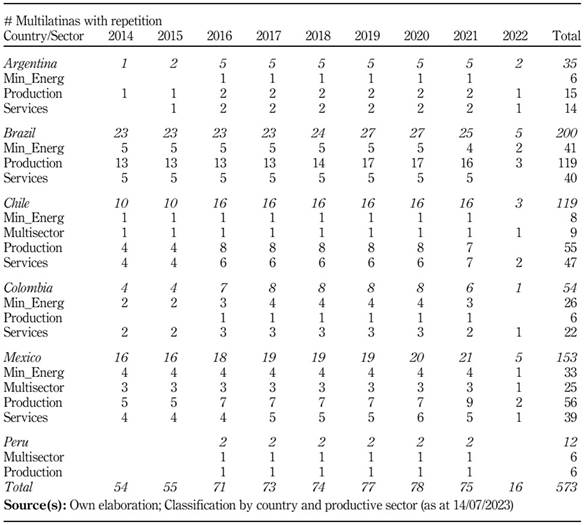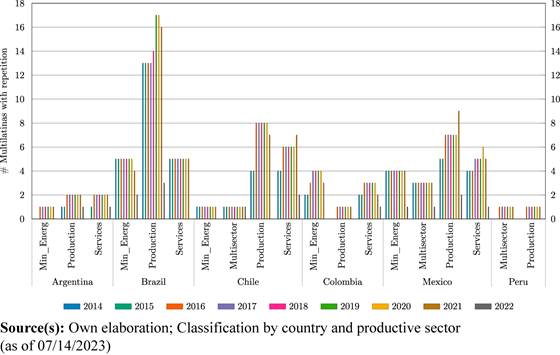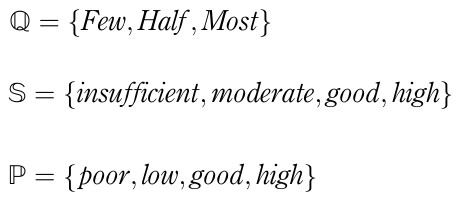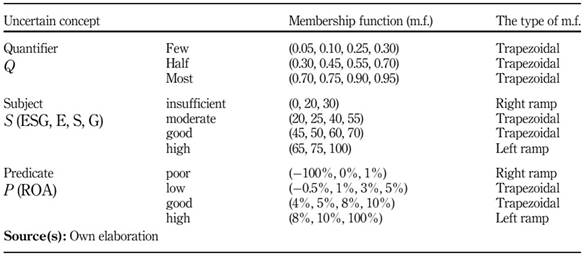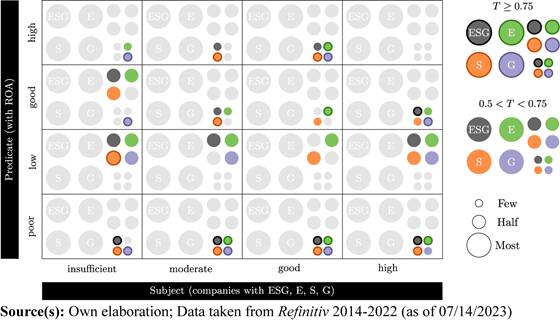1. Introduction
The world operates under natural and human resource restrictions and pressures instead of being governed by financial limitations. Investors are now aware of the relationship between environmental, social, and corporate governance (ESG) factors and financial performance (Lee et al., 2009; De Lucia et al., 2020; Sharma et al., 2022), and are willing to forego a portion of their profit margins in exchange for the ESG business commitments. When considering business implications, these commitments should be governed by two fundamental sustainability actions: minimizing energy and water consumption and efficient use of these resources (Vila, 2022). These endeavors align with the sustainable development goals (SDGs) outlined in the 2030 Agenda (United Nations, 2015). The achievement of these goals must be guided by the implementation of responsible public and private policies that have a global scope and are applicable across various regions. Hence, the identification of relationships between ESG factors and the financial performance of companies, employing various approaches and methodologies, facilitates the development of a sustainability diagnosis that enables informed decision-making aimed at achieving the SDGs.
Numerous studies have attempted to establish the relationship between ESG and financial performance. Friede et al. (2015) conducted a review of this subject by examining 2,200 empirical studies, and their findings reveal that investment in ESG is favorable, with the majority of works reporting positive relationships. These results are corroborated by the findings of Xie et al. (2019), who analyzed data from a sample comprising over 6,600 companies across 74 countries. In contrast, Duque-Grisales and Aguilera-Caracuel (2021) observe a negative relationship in their analysis of a sample of 104 Multilatinas.
Lee et al. (2009) argue that a company’s high ESG performance negatively affects its financial performance as measured by market metrics, but they do not observe such a relationship when accounting metrics are employed. Authors such as Galema et al. (2008) and Horváthová (2010) have not identified conclusive relationships between ESG and financial performance. Hence, the selection of the financial variable under consideration may lead to inconsistencies in the relationships investigated (Xie et al., 2019).
Aldowaish et al. (2022) conducted a systematic review of 29 studies that examined the integration of ESG in business models and investment decision-making. The authors identify a research gap concerning the process of integrating and supporting ESG adoption to transform business models intended to foster sustainability and enhance financial performance.
The above suggests that the relationship between ESG and financial performance being examined is complex, and its study holds both global significance and relevance. Furthermore, to the best of our knowledge, most of the studies documented in the literature employ statistical methods to determine this relationship. Conversely, alternative approaches employing artificial intelligence (AI) are examined, as shown in the subsequent section. In this regard, and to contribute to the literature, an examination of AI methodologies is warranted, particularly using linguistic summaries to describe data that clarify this relationship through natural or human language. Such summaries are designed based on uncertain logic propositions, e.g. the expression few Multilatinas with high ESG have good ROA is a linguistic summary with a truth value to be measured.
Consequently, drawing from the framework of uncertain logic developed by Liu (2010a, 2011) and implemented by Grajales and Medina (2021), this paper proposes a methodology based on uncertain mining technology to identify the relationships of ESG and its components with a financial performance metric. The analysis is conducted using linguistic summaries in natural language, with the aim of assessing the sustainability of a given geographic region.
In this regard, this work makes three methodological contributions. First, an uncertain mining technology is designed, i.e. a process that accounts for the relationships of ESG and its components with a financial performance metric within a certain geographic area. Second, an additional process is suggested to facilitate knowledge management based on the acquired linguistic summaries. Third, the integration of these two processes yields a set of signals that serve to diagnose the region’s sustainability. Moreover, a practical contribution of the present work is an instantiation and application of the methodology to study a group of Multilatinas for the 2014-2022 period, which sheds light on the extent to which Multilatinas are contributing to the sustainability of Latin America.
The economic sense of these contributions is to incorporate externalities around the ESG and financial performance of a pool of companies through simple and precise language into a decision-making process that allows governments, boards, and managers to identify critical aspects to improve key performance indicators and business activities. Under such language, driven by artificial intelligence, it may be possible to discover risks and opportunities subjacent to massive volumes of data.
The formulated methodology is a novel approach that can be applied across continents and geographies to examine the underlying relationships between ESG and financial, market, or accounting factors. It is anticipated that these relationships, expressed in natural language, will influence the decision-making processes of both political and economic actors when formulating strategies aimed at enhancing sustainability.
This article is organized as follows. Section 2 provides background on the ESG index and on sustainability, as well as on the uncertainty theory and uncertain mining technology. Section 3 proposes a method based on uncertain mining technology to establish relationships of ESG and its components with a financial indicator, manage the mining outcomes, and diagnose the sustainability of a given region. Section 4 develops an instantiation and application of the method for a group of Multilatinas to illustrate the current state of sustainability in Latin America. A discussion of the findings is presented in Section 5. The final section discusses the conclusions, implications, and opportunities identified within this line of research.
2. Literature review
2.1 ESG for sustainability and financial performance under AI
The inclusion of ESG factors emerged in 2004 as a strategy to be considered in financial investment practices (The Global Compact, 2004). In 2015, this concept also surfaced in the 2030 Agenda adopted by the United Nations, which defined 17 Sustainable Development Goals (SDGs) (United Nations, 2015) intended to eradicate poverty, preserve the environment, and promote social well-being. The environmental component (E) is associated with SDGs 6, 7, 9, and 11-15; the social component (S) with SDGs 1-6, 8-10, 12 and 16; and the corporate governance component (G) with SDGs 5, 8, 9, 11-13, 16 and 17 (Shmatov and Castelli, 2023).
ESG and its constituent factors are disclosed as indices ranging from 0 to 100 for various organizations and businesses around the world. A higher index represents superior performance in the corresponding factor, thereby demonstrating greater commitment, projection, and transparency with regard to their stakeholders. Hence, higher indexes reflect better sustainable practices. These scores are available on various platforms, including MSCI, Refinitiv, Bloomberg, and Sustainalytics.
However, Escrig-Olmedo et al. (2019) note that the ESG index disclosed varies across said platforms and that their methodologies or tools may not effectively capture the true nature of the ESG practices adopted in organizations. Conversely, authors such as Hughes et al. (2021) and Saxena et al. (2023) employ alternative scoring systems that are fed by artificial intelligence, industry 4.0, blockchain, and big data technologies. These approaches offer benefits such as increased standardization, accuracy, and data accessibility, as well as improved transparency and rigorous real-time analysis.
Concerning the relationship between ESG and financial performance in the context of artificial intelligence, a preliminary study was conducted by Albanés (2022), which employs a method incorporating uncertain logic to establish a non-causal link between ESG and financial metrics. De Lucia et al. (2020) and Gupta et al. (2021) used supervised learning techniques to predict financial metrics from ESG indicators and identify positive relationships. In the same vein, D’Amato et al. (2021) employed a machine learning approach to explain ESG ratings derived from balance sheets and income statements from a sample of Euro Stoxx 600 corporations, finding a high predictive power of the ESG index.
2.2 Uncertainty theory and uncertain mining technology
The uncertainty theory, as proposed by Liu (2007, 2010a), provides an alternative approach to investigating uncertain phenomena; it serves as a complementary framework to the probability theory developed by Kolmogorov (1933) while challenging the theory of possibility in Zadeh (1978). The uncertainty theory proposes an uncertain measure
that assigns a degree of belief in the interval (0, 1) that an uncertain event will occur. This measure satisfies the mathematical axioms of normality, duality, subadditivity, and product, hence ensuring the preservation of fundamental logical principles of human reasoning in an uncertain environment. The determination of this metric is executed under expert judgment, while also considering the potential availability of historical data. Furthermore, the uncertainty theory introduces several concepts, including the uncertain variable in Liu (2007), the uncertain set in Liu (2010b), and the membership function in Liu (2012, 2018). These concepts provide the foundation for novel advancements in various mathematical domains, which in turn have direct applications in artificial intelligence.
Liu (2011) introduces uncertain logic under this conceptual framework for modeling human language. Uncertain mining technology was developed in Grajales and Medina (2021), based on this specific logic to extract information in the form of linguistic summaries that explain two features within a dataset. This is achieved using propositions in uncertain predicate logic, where the quantifier, the subject, and the predicate are all uncertain sets, and the truth value of each proposition is an uncertain measure that represents a belief in the corresponding summary. Such a truth value is calculated for the first time in Chen and Ralescu (2011). The technique of uncertain mining seeks to solve an optimization problem by generating a ranked list of linguistic summaries ordered by their level of belief. These summaries describe the behavior of the data of interest in a natural language. More precisely, this is formulated as follows:
Let
be a dataset for n individuals, wherein two features, a i and b i , have been measured for an individual i. The data in A are described with linguistic summaries of the form Q of S are P, denoted by (Q,S,P), where Q, S and P are uncertain sets representing a quantifier, a subject, and a predicate, respectively. This means that an amount Q of data a i belonging to S is such that data b i are contained in P. The truth value T of (Q,S,P) , (Q,S,P), is an uncertain measure that has been defined and calculated by Chen and Ralescu (2011), and subsequently implemented by Grajales and Medina (2021). Now, if are collections of setsQ, S , and P, respectively, then the process of uncertain mining over extracts a list
that solves the optimization problem given by:
where α is the minimum belief value accepted by humans (see Liu, 2011).
3. Method
The relationship of ESG data and those of any of its components (E, S, and G) with financial performance data is determined over time for an aggregate of companies in a region using the uncertain mining technology developed by Liu (2011), whose fundamentals are described in Section 2.2. From these data, the mining proposed in this article extracts a set of linguistic summaries of the form Q of S are P, denoted by (Q,S,P), in an uncertain predicate logic, to which a truth value T is assigned. Furthermore, the relationships found with the mining process are studied through a management process based on innovative knowledge. This facilitates the development of a signaling system designed to diagnose the sustainability of the regions where the companies are located.
Quantifier Q is an uncertain set representing a number of individuals within a specific universe, e.g. few, most, etc. Subject S is an uncertain set containing specific individuals from that universe, e.g. companies with a moderate ESG index. Predicate P is an uncertain set representing a quality shared by the individuals mentioned in the subject, such as exhibiting favorable financial performance.
Now, as per the maximum uncertainty principle (Liu, 2010a), a truth value T(Q, S, P) greater than 0.5 suggests that the linguistic (Q, S, P) performs significant uncertainty mining on the dataset. A finding of this type, T(Q, S, P) > 0.5, is associated with information with a high belief degree and may have implications for political, regulatory, strategic, economic, environmental, social, and corporate governance decision-making, aimed at establishing a sustainable path for the region. A value T (Q, S, P) ≤ 0.5 means that the linguistic found is irrelevant since its belief degree is at most 50%.
Consequently, an uncertain mining technology is initially employed to extract the relationship of ESG and its constituent elements (E, S, or G) with a financial performance indicator of the companies in a given region. This technology generates a list of linguistic summaries (Q, S, P), ranked according to their corresponding truth value T. Subsequently, an innovative mechanism is proposed to complement the technology and support the management of the knowledge obtained from the list of linguistics. These two processes are explained below, followed by a proposal for a signaling system that applies said processes to enhance the sustainability diagnosis of the region.
i. Uncertain mining technology. Drawing upon the seminal work of Liu (2011), this study follows a method similar to the one developed by Grajales and Medina (2021).
a. The ESG, E, S, and G measures, as well as a financial performance indicator of interest, are available for the companies in the region. With no loss of generality, the financial performance indicator will be considered hereafter as the return on assets (ROA) measure, defined as the ratio of net income to total assets.
b. Subsequently, three collections,
, are defined, each containing different uncertain quantifiers, subjects, and predicates, respectively.Specifically, the uncertain quantifiers are stated as Q1: “Few”, Q2: “Half”, Q3: “Most”. The uncertain subjects applied to the data vectors ESG, E, S, and G, are designated as S1: “insufficient”, S2: “moderate”, S3: “good”, S4: “high”. Finally, the uncertain predicates applied to the ROA data vector are defined as P1: “poor”, P2: “low”, P3: “good”, P4: “high”. The definitions of S and P displayed, facilitate the implementation of the mining process.
Thus, the linguistic summary (Q, S, P),
, and , which describes a relationship of ESG and its components with the ROA financial indicator, is read as follows:Q of companies in the region with <ESG or E or S or G> S have ROA P
where the terms appearing between the < > symbol are replaced by a single expression, which can be either ESG, E, S, or G. Subject S and predicate P correspond to the uncertain concepts previously defined for this item.
In accordance with expert judgment, each uncertain concept
is made to correspond, respectively, to a membership function following one of the forms suggested in Liu (2012, 2018), as specified in Section 2.2.c. Lastly, the linguistic combinations (Q,S,P) are formulated, where
, which describe the possible relationships of ESG and any of its components (E, S, or G) with the ROA financial performance of the firm. In this way, the studied relationship is formulated through 48 linguistics combinations (Q,S,P) (3 quantifiers, 4 subjects, and 4 predicates).The truth value of each linguistic summary(Q,S,P)is calculated. The problem of identifying and ranking all the linguistics along with their corresponding truth values T, with T ≥ 0.75, is solved by finding the solution to the optimization problem presented in (1), where α is interpreted as the minimum degree of belief or significance that is defined and agreed upon by a panel of human experts.
Overall, the following four relationships Q,S,P and their corresponding truth value T are studied using linguistic summaries: ESG vs ROA, E vs ROA, S vs ROA, and G vs ROA.
ii.Knowledge management support.To support the management of knowledge derived from the above linguistic summaries (Q,S,P) and their belief value T, where
, in relation to the agreed financial indicator, aconceptual uncertain mining diagramis defined. This is a categorical plane that enables the visualization of the relationships(Q,S,P)that exhibit a representative belief degree T. The diagram describes the summaries across the following five dimensions.a. Quantity of companies, which is of an uncertain nature and is associated with quantifier Q and represented by the size of a circle. As per section i-b), a small circle refers to “Few”, a medium circle to “Half”, and a large circle to “Most”.
b. Well-being, which is of a deterministic nature, is associated with the ESG index or any of its components (E, S, or G) and is represented by the color of a circle. Specifically, dark gray is used for ESG, green for E, orange for S, and purple for G.
c. Quality of well-being, which is of an uncertain nature, is associated with subject S and rates the well-being dimension. It is represented on the horizontal axis of the categorical plane. The order of the ratings is as specified in item i-b).
d. Quality of financial performance, which is of an uncertain nature, is associated with predicate P, and rates the defined financial performance (ROA). It is represented on the vertical axis of the categorical plane. The order of the ratings is as specified in item i-b).
e. Degree of belief T, which is of a deterministic and a numerical nature (between 0 and 1), will be represented by a colored circle in the categorical plane if T > 0.5, as shown in ii-b). If T≤ 0.5, the respective circle is light gray. If 0.5 < T < 0.75, the contour and interior of the circle are the same color. If T ≥ 0.75, the contour of the circle is colored in a darker shade than its interior. Additionally, to accurately present the value of T, a digital interactive diagram may be employed.
In each subregion of the categorical plane (Si, Pj),i= 1, ⋯,4;j= 1, ⋯,4, a total of 12 linguistics(Q,S,P)are derived (3 quantifiers and 4 indices given by ESG, E, S, and G). Figure 1 depicts the 12 summaries arranged in the form of rectangles, which are additionally labeled based on the dimensions specified in items, ii-a), b) and e). Figure 2 displays the complete categorical plane.

Figure 1 Ordered representation of the dimensions defined in items ii-a), b), and e) of the linguistic summaries
3.1 Diagnosis of a region’s sustainability via uncertain mining
Upon processing the categorical plane depicted in Figure 2 for the region comprising the set of companies, the linguistic summaries(Q,S,P)with truth value T > 0.5 can be readily distinguished based on their respective colors. This enables the extraction of the most significant relationships of ESG and its components with the financial indicator. This knowledge extraction will in turn enable decision-makers to diagnose the sustainability of a particular region.
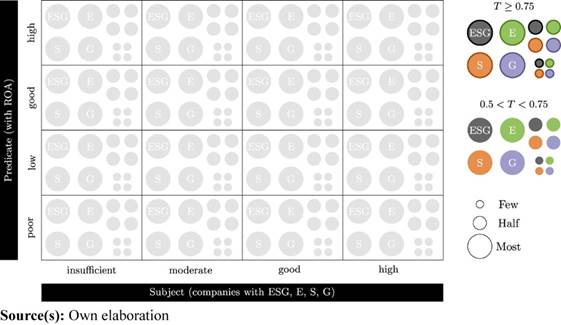
Figure 2 Uncertainty mining conceptual diagram to identify the relationship of ESG and its components with ROA financial performance
To diagnose whether firms are contributing to the sustainability of their respective regions, the signalsforbidden, warning,andsatisfactory, are superimposed on the categorical plane, as shown in Figure 3. Each sign is represented by two distinguishable outlines, with the thicker outline indicating that the message conveyed by the signal associated with that particular area of the categorical plane becomes more forceful.
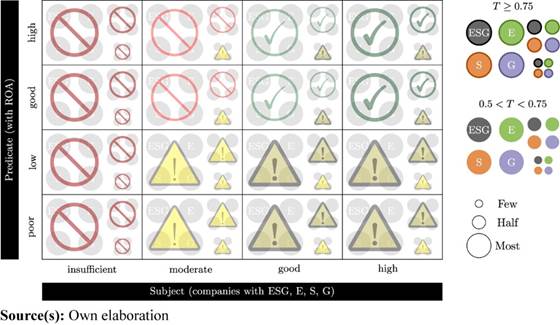
Figure 3 Signals to diagnose the sustainability of a region with the linguistics identified through uncertain mining technology
Theforbiddensignal is associated with areas where the linguistic summaries indicate that companies do not make any contributions towards the sustainability of the region. This phenomenon may be explained by the companies' low ESG index, even when they exhibit strong financial performance. Thealarmsignal is associated with areas in which companies contribute to sustainability, yet current circumstances may impede or undermine this objective. This scenario may occur within a set of companies with significant sustainability commitments reflected by the ESG index, but whose financial performance is not satisfactory, or within a group of companies that exhibit both significant sustainability commitments reflected by the ESG and satisfactory financial performance, but whose number is insufficient to generate a positive impact on their region. Thesatisfactorysignal is associated with areas of the categorical plane where ESG and financial performance coexist under desirable conditions.
Hence, if significant linguistic summaries (colored) appear underneath thesatisfactorysign, the diagnosis for the region is positive. Consequently, both public and private policies should be directed towards attaining a positive diagnosis. It should also be noted that by superimposing the diagrams, the strength or weakness of the E, S, and G components can be discerned.
4. Results
This application is developed as an instantiation of the methodology outlined in Section 3 for a group of Multilatinas to obtain a sustainability diagnosis for the Latin American region, thereby enabling well-informed decision-making for political, regulatory, and economic actors. Initially, the dataset and its corresponding contextual information are described. The processes of uncertain data mining and knowledge management support are subsequently implemented.
4.1 Data and context
4.1.1 Company selection
The eligible companies are the ones featured in the published rankings of América Economía journal’s 100 Multilatinas on at least two occasions between 2015 and 2021 (1), and which have made their ESG and financial data available on a digital platform. In the journal, companies that have achieved yearly sales above USD230 million in fiscal year t − 1 are included in the ranking for year t. This ranking is determined based on four criteria: commercial strength, number of employees abroad, geographical coverage, and expansion. The majority of these companies have a recurring presence in the listings throughout the observation period.
4.1.2 Data selection
The relevant data for these companies comprise six indicators as specified below, obtained from the Refinitiv platform on July 14, 2023, for the 2014-2022 period and provided that at least one year of information is available.
ESG indices and its components, i.e. E, S, and G.
Indicators for estimating the ROA financial performance: net income and total assets.
Acquiring data from the Refinitiv digital platform for the years 2021 and 2022 is crucial both for reducing the reliance on the publications of the América Economía journal and due to the recurring pattern observed, according to which the majority of companies appear year after year. In this connection, the journal reports 124 Multilatinas between 2015 and 2021. Of these, 116 appear at least twice in the ranking. However, according to the data available in Refinitiv, the sample size was reduced to 82 firms from Argentina, Brazil, Chile, Colombia, Mexico, and Peru.
The above information is comprehensively reported in Table A1 of Appendix 1, on which a count with repetition is conducted; that is, if a company is listed multiple times in the ranking of the journal, the frequency of its occurrences is counted. This count results in 573 firms for which data is available in Refinitiv, between 2014 and 2022, as detailed in Table 1. It is observed that 82 Multilatinas are dispersed, with some repetitions during the study period. Hence, the total number of observations that need to be considered in our study is 3,438 (573*6).
4.1.3 Context
Table 2 below presents a categorization of the data provided in Table 1 by country and four productive sectors: Mining and Energy (cement, mining, petroleum, petrochemicals, gas, bioenergy, and electric power), Production (food, agroindustry, steel/metallurgy, beverages, aerospace, manufacturing, forestry, chemicals, automotive, construction), Services (health, transportation, air transportation, entertainment, telecommunications, retail, finance, media, technology, logistics), and Multisector. Table 2 provides an overview of the economic patterns observed in the Latin American countries under investigation, and Figure 4 illustrates the data from Table 2.
Table 1 Count with repetition of Multilatinas with available data in Refinitiv from 2014 to 2022 (as at 14/07/2023)

4.2 Uncertain mining technology
4.2.1 Uncertain concepts Q, S, P According to section 3 (i-b), the
of uncertain concepts are given by:
The membership functions of the uncertain sets of these collections are defined in accordance with expert criteria and the data to be used. The functions associated with quantifier Q and predicate P are obvious. Subject S functions are constructed from the rating levels assigned to the ESG index on the Refinitiv platform. The proposed membership functions are illustrated in Table 3 and their representations are depicted in Appendix 2, Figures A1-A3. With the functions thus defined, a significant number of companies (count with repetition) remain associated with subject S.
4.2.2 Uncertain mining results
Uncertain mining technology is implemented on the data following the process outlined in item i of Section 3. The outcomes for linguistic summaries with a truth value T equal to or greater than 0.75 are presented in Table 4. A total of 49 significant linguistic summaries (T > 0.5) were obtained to describe the relationships of ESG and its components with financial performance based on ROA.
Table 4 Linguistic summaries to establish the relationship of ESG and its individual components with ROA financial performance in Multilatinas
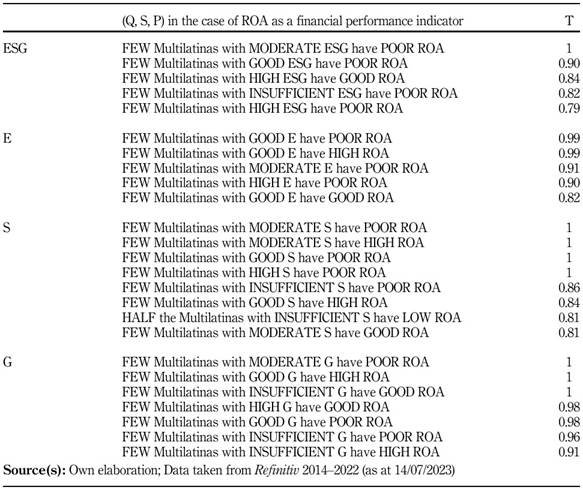
4.3 Knowledge management support
The 49 significant linguistic summaries found by the uncertain mining technology form a body of knowledge, which is managed by implementing process ii, as defined in Section 3. The results of this process are illustrated in Figure 5, which reveals that Multilatinas lack a unified goal regarding sustainability. This is evident from the significant dispersion of summaries in the categorical plane, with 67% of them indicating that the identified relationships are only applicable to a few companies. Additionally, no convenient summaries are observed for the region (in which Q is “Half” or “Most”) that indicate the presence of companies in the favorable subregions (good and high) with respect to ESG and its components as well as ROA.
5. Discussion
The integration of knowledge management and uncertain mining technology, as implemented in Section 4, enhances the sustainability diagnosis of the Latin American region. Upon superimposing the signal system outlined in Section 3.1 on Figure 5, as shown in Figure 6, it is evident that the diagnosis of the region is not positive, as no linguistic summaries associated with satisfactory zones were found. This diagnosis is strengthened in Appendix 3, where the linguistic relationships of ESG and its components are analyzed with Tobin’s Q market indicator.
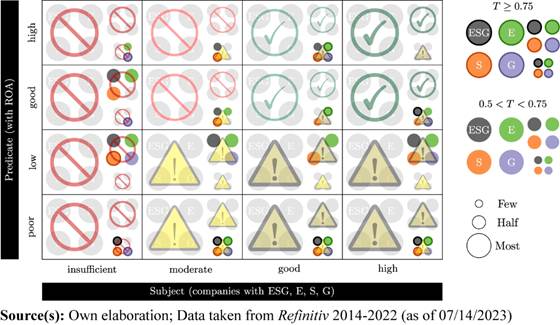
Figure 6 Diagnosis of sustainability in Latin America expressed as linguistic summaries found with uncertain mining technology in Multilatinas
Out of the 49 significant linguistic summaries linking ESG, E, S, and G with ROA from a pool of 573 Multilatinas (count with repetition) over the 2014-2022 period, 13 were found to be located in bluntly forbidden areas. Although a significant number of these companies have a favorable ROA, they do not show any commitment to the sustainability of their region. Given the prevailing environmental, economic, and social challenges confronting our society, governments and corporations in Latin America must prioritize high-impact actions that address and contribute to sustainability strategies, in accordance with the recommendations of international frameworks, such as the SDGs.
Moreover, 20 summaries place a wide range of Multilatinas in low warning zones. Among them, companies with an unfavorable ROA would benefit from a policy intervention aimed at enhancing their financial performance to maintain or improve their ESG indexes and components. Furthermore, a limited number of companies in this area report moderate ESG indices despite having a favorable ROA. Given their small number, they have no negative impact on the region, yet they possess considerable potential to further engage with ESG issues.
The presence of the remaining 16 summaries in high-warning zones suggests the existence of two different scenarios. First, the quantity of companies associated with unfavorable ROA is measured with the uncertain term “Half”, which suggests that despite having a high ESG commitment, they would benefit from a timely policy aimed at improving their finances. The region faces significant vulnerability as these companies may deviate from the path to sustainability that has been attained, should they not receive adequate financial assistance. Second, the number of Multilatinas that exhibit favorable ESG, E, S, G, and ROA is insufficient to yield a positive diagnosis of sustainability. Consequently, additional companies must engage in these dynamics.
6. Conclusion
This paper proposes a methodology based on an uncertain mining technology that identifies linguistic summaries to capture the relationships of ESG and its components with a financial metric. This information is thereafter used to diagnose the sustainability of a region through uncertain mining conceptual diagrams. This is a pioneering initiative that may be applied globally to assess the financial performance of companies within a specific geographic region, while also considering their ESG commitments. It facilitates a comprehensive monitoring of the progress towards achieving the SDGs outlined in the 2030 agenda.
As a methodological instantiation, the diagrams illustrate the linguistic relationships of ESG and its components with the ROA financial metric for a large group of Multilatinas. All these relationships are located in areas designated as forbidden or warning zones, which suggests the need for a comprehensive and effective policy in the Latin American region that establishes shared sustainability objectives for corporate entities. However, the knowledge management obtained from the linguistic summaries identified provides political, regulatory, and economic entities with accurate, relevant, updated, and reliable information for their decision-making processes. This will benefit companies that exhibit a stronger commitment to sustainability. When the financial metric is changed to Tobin’s Q, a diagnosis that coincides with the previous findings is presented.
It should also be highlighted that among the linguistics identified, there is not a single representative group (whether medium or large) of Multilatinas located in the most desirable zone of the diagrams, i.e. groups that exhibit exemplary leadership in their adherence to the sustainability standards.
Finally, this study emphasizes the significance of uncertain mining as an analytical tool that leverages human language and represents a state-of-the-art and promising technology with broad applicability across many domains, including the natural sciences, social sciences, engineering, business, and medicine.
7. Limitations
Alternative AI-driven measures to the ESG index should be considered to reflect in real time the companies' sustainability commitments and investments and other financial performance measures. The effectiveness of the technology proposed herein relies on the availability and veracity of the ESG data supplied by the businesses under study. Additionally, the suggested uncertain mining can be expanded by the use of natural language to establish complex relationships involving several propositions in predicate logic. In addition, the expansion could be achieved by making use of uncertain random logic or uncertain random entailment, as in Liu and Yao (2017). It can also be further refined to identify the specific companies comprising a given linguistic summary. Finally, the application developed targets a specific group of Multilatinas, but it has the potential to be expanded to include broader groups, other regions, or continents.
Notes
1. América Economía journal did not publish a ranking of Multilatinas for 2020 and 2022.
Conflict of interest: The authors declare that they have no conflict of interest.























